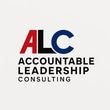Barriers to Alignment
Nobody said it would happen without pushback.
4/16/20253 min read


Most leaders assume their teams are aligned until they realize they’re not—usually when things go sideways. Alignment erodes from silence, assumptions, and friction that never gets called out. Here are the key barriers that can derail organizational goal alignment:
1. Siloed Departments: Teams lose the big picture.
2. Conflicting Incentives: Metrics pull in opposite directions.
3. Vague or Shifting Goals: Kills initiative.
4. Fear of Initiative: Nobody acts unless told.
5. Leadership Ego: Micromanagement masquerading as quality control.
Conflicting incentives, in particular, can unravel even the best-intentioned teams. A public example comes from Wells Fargo’s sales scandal in 2016. The bank set aggressive sales targets to boost growth, incentivizing employees with bonuses for opening new accounts. Senior leadership aimed for market dominance, but the pressure to meet short-term quotas led employees to create millions of unauthorized accounts, harming customers and the company’s reputation. The incentive structure rewarded immediate results, clashing with the broader organizational goal of trust and long-term customer loyalty. This misalignment could have been avoided if teams two levels down had been guided by the higher intent—building genuine relationships—rather than chasing metrics that skewed priorities. The lesson? Clear intent from senior leaders, paired with incentives that reflect mission-driven decisions, fosters trust and keeps teams pulling in the same direction. <sup>2</sup>
Vague or shifting goals are equally damaging, especially in industries like construction, where “get the job done on time, under budget, with good quality” is a common refrain. That kind of broad directive sounds reasonable but often kills junior leaders’ initiative, leaving them unsure of priorities and hesitant to act. I saw this firsthand when I walked onto a new job site and asked, “What are we trying to do today?” No one—not the crew, not the foremen—could pinpoint the day’s priority or the one goal that mattered most. The lack of clarity had sapped momentum, and the team was drifting, risking delays and corner-cutting as the deadline loomed. To recover, I set specific goals tied to higher objectives, like “erect 85% of steel prior to [specific date] to ensure structural milestones are met.” I showed how this fed into the project manager’s goal of staying on schedule and the client’s aim for early occupancy—two levels up. With this focus, junior leaders knew exactly what to prioritize. They started coordinating crews, optimizing equipment use, and solving problems independently. By the critical phase of the job, the team was firing on all cylinders, delivering ahead of schedule with quality intact. That turnaround showed how effective leadership skills can revive a team by replacing vagueness with intent-driven clarity.
Silence is another insidious barrier. When junior leaders stop asking questions or sharing challenges, it’s a sign they’re disconnected from the mission—or afraid to speak up. Leaders can detect this early by getting into the trenches. Sit in on a junior team’s meeting. Check in on a project their immediate supervisor assigned. These moments act like a pH test, revealing whether silence is creeping in. Are people engaged? Are they tying their work to goals two levels up? If not, it’s time to reconnect through open dialogue and visibility. This hands-on approach builds trust and ensures effective leadership skills thrive across levels, keeping alignment strong.
Fix each barrier with visibility, communication, and clear expectations. By addressing conflicting incentives, vague goals, and silence head-on, leaders can sustain a culture of decentralized leadership that drives lasting success.
**Actionable Practices**:
- Break down silos with cross-department updates tied to shared goals.
- Align incentives to long-term mission, not just short-term metrics.
- Set specific, intent-driven goals and connect them to higher objectives.
- Foster initiative by rewarding action, not punishing failure.
- Get into the trenches regularly to spot and address silence early.
**Footnote**:
<sup>2</sup> Stumpf, J. (2016). Testimony before the U.S. Senate Committee on Banking, Housing, and Urban Affairs, September 20, 2016; supplemented by reports from the Consumer Financial Protection Bureau, “Wells Fargo Agrees to Pay $3.7 Billion to Settle Consumer Violations,” December 20, 2022.
Follow us for updates on social media
Call OR EMAIL US
Newsletter - SIGN up!
patrick@accountableleadershipllc.com
913-299-7104
© 2025. All rights reserved.
Social Media
